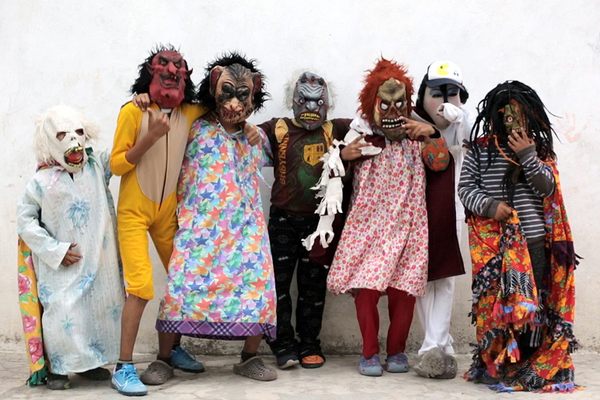Watch a Hungarian Masked Monster Parade
They’re either scaring away Old Man Winter or the Ottoman Empire.
Every February in the Hungarian city of Mohács, goat-horned monsters and mysterious women in lace masks parade through town, jangling bells and twirling noisemakers. This is Busójárás, a national tradition dating back to the early Middle Ages.
Busójárás achieves multiple purposes. First, it is a traditional Carnival, a festival of drunkenness and revelry celebrated the week before Lent begins on Ash Wednesday. Second, it’s the reenactment of a historic victory by the Šokci, a Croatian ethnic minority that has a large populace in Mohács.

As the story goes, the townspeople fled the city to escape the Ottoman Turks who had invaded in 1526. Hiding in the forest, they were approached by an old mystic who told them to don masks, weapons, and bells, and that a knight would appear to lead them into battle. Some nights later, when the masks were fashioned, the knight arrived and led them home to Mohács where the racket of bells led the Turks to believe they were plagued by demons. They deserted the town, and the townspeople had their homes back. Another, more ancient version tells that the Busos are chasing away winter itself.
The Busójárás parade occurs every year without fail. Modern amenities have made carving the Buso masks easier (each one is unique to its wearer), and as word of the festival spreads the crowd grows bigger each February.
Every day we track down a Video Wonder: an audiovisual offering that delights, inspires, and entertains. Have you encountered a video we should feature? Email ella@atlasobscura.com.




























Follow us on Twitter to get the latest on the world's hidden wonders.
Like us on Facebook to get the latest on the world's hidden wonders.
Follow us on Twitter Like us on Facebook